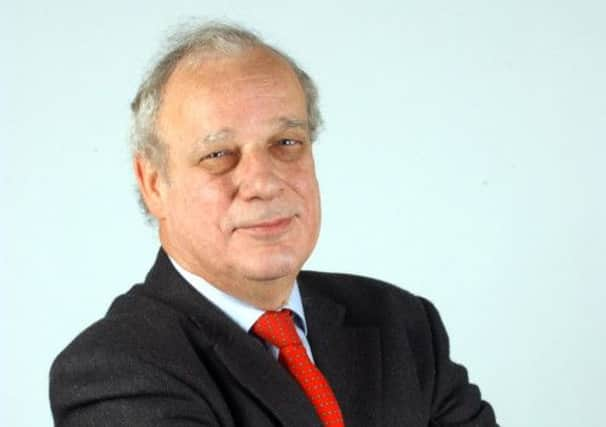Comment: QE quandary and defence of your pension


Federal Reserve chairman Ben Bernanke is this week expected to begin the process of weaning the United States economy off quantitative easing (QE). And over here, we should get a further steer on whether interest rates may rise sooner than Bank of England governor Mark Carney’s “forward guidance” has led us to expect.
The onset of QE “tapering” has been anxiously awaited in the markets. The concern is that the prices of government bonds will fall – and their yields rise – as investors adjust to the prospect of higher interest rates.
Advertisement
Hide AdAdvertisement
Hide AdNow the prospect of higher interest must surely be a boon for savers and those on fixed incomes. They have had to endure five years of near rock-bottom returns on their nest eggs as heavily-indebted borrowers – governments, businesses and households – have been feather-bedded. And, after allowing for inflation, savers have been penalised, suffering a loss in the spending value of their nest eggs. The turning of the tide in interest rates is no easy transition to handle. And this matters for those in or near retirement anxious to protect the value of their pension savings from further erosion.
Should they be as heavily exposed to government stock and bonds? Should they not shift more of their savings into equities to avoid being caught by what could be a prolonged period of bond market weakness?
Most pension funds are heavily weighted towards holdings in government gilt-edged stock, corporate bonds and fixed interest bonds as these are traditionally less volatile than shares and provide a reliable income. Indeed, some pension funds, encouraged by tighter prudential requirements and the need to provide greater certainty of returns after three stock market slumps in the past 13 years, have shunned equities altogether and are 100 per cent invested in government stock and bonds, missing out in the 50 per cent plus stock market rally since 2009.
And bond prices have looked increasingly vulnerable as markets have fretted over the withdrawal of QE. Under this, central banks were substantial buyers of government bonds, providing a powerful prop to bond prices and helping to hold interest rates down. Some of the QE money was also used to purchase other assets such as equities.
America’s QE programme has been running at $85 billion a month. Now that the US economy has shown signs of recovery, a reduction in QE is seen, in the words of Bank of America Merrill Lynch economists, as “a done deal”.
The difficulty for Bernanke is that the third-quarter performance of the US economy does not show much of an improvement on the April-June period – suggesting that the recovery could be running out of momentum.
The paradox for investors is that a shift to equities might not be the “win-win” it seems, precisely because the economic recovery has been weak and may be slowed by the withdrawal of part or all of QE support. Rising interest rates have traditionally not been good for equity markets – a case of “out of the frying pan into the fire”.
Here in the UK, the Bank’s monetary policy committee has indicated that it will not raise rates until unemployment falls below 7 per cent, and it does not expect this to happen until 2016. However, there are growing doubts as to whether rates can be held at their ultra-low level of 0.5 per cent for so long. Market expectations are that rates will rise sometime in 2014 or 2015 while yields on ten-year gilts have been rising.
Advertisement
Hide AdAdvertisement
Hide AdAll this is unsettling for pension savers looking for some stability and certainty. But the onset of tapering may not be quite as turbulent as feared. First, markets have already been discounting this change in policy. Second, it is likely that Bernanke will move cautiously – cutting QE by little more than $10bn a month. And third, the prospect of higher rates may have a counter-intuitive impact on business investment decisions, with companies moving to step up expansion before rates rise further.
As for how pension pots should be allocated between bonds and equities, this is very much up to the individual’s age, preference and attitude to risk. Many will prefer the relative certainty of lower returns on fixed interest than the volatility of shares. That said, moving the equity portion up to, say, 25 to 30 per cent across a range of defensive, income orientated funds and trusts would not be unreasonable.
Central banks are unlikely to undergo any major change in direction without ensuring that economic conditions justify it and that markets are not taken by surprise.